Amanda Foote
2022-01-21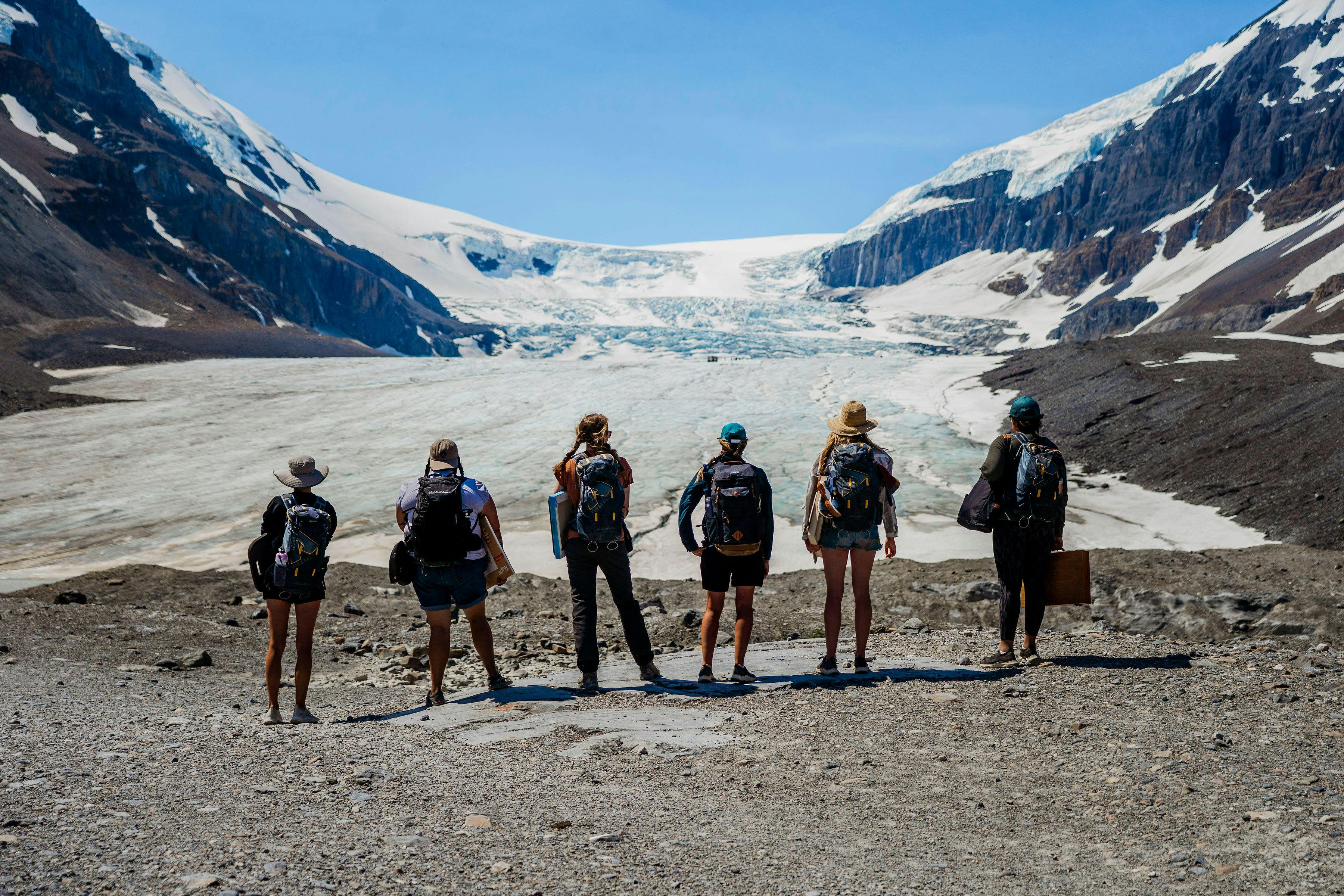
Despite their endurance, the range known as the Canadian Rockies has changed a great deal in the years since Catherine Whyte set out to paint them. Whyte, a pioneer who was instrumental in the social development of Banff, broke the stereotypes of her time as a painter, an outdoors woman, and in her friendships with the neighboring Îethkabi (Stoney Nakoda). By all accounts she was a maverick, someone who made her mark on the land, and this has been her legacy. Yet she was also a settler woman who was an important part of the project to deeply entrench the western status quo in the Bow valley. The way of life that she brought to the region left an indelible mark of its own on the land as well as all its inhabitants.
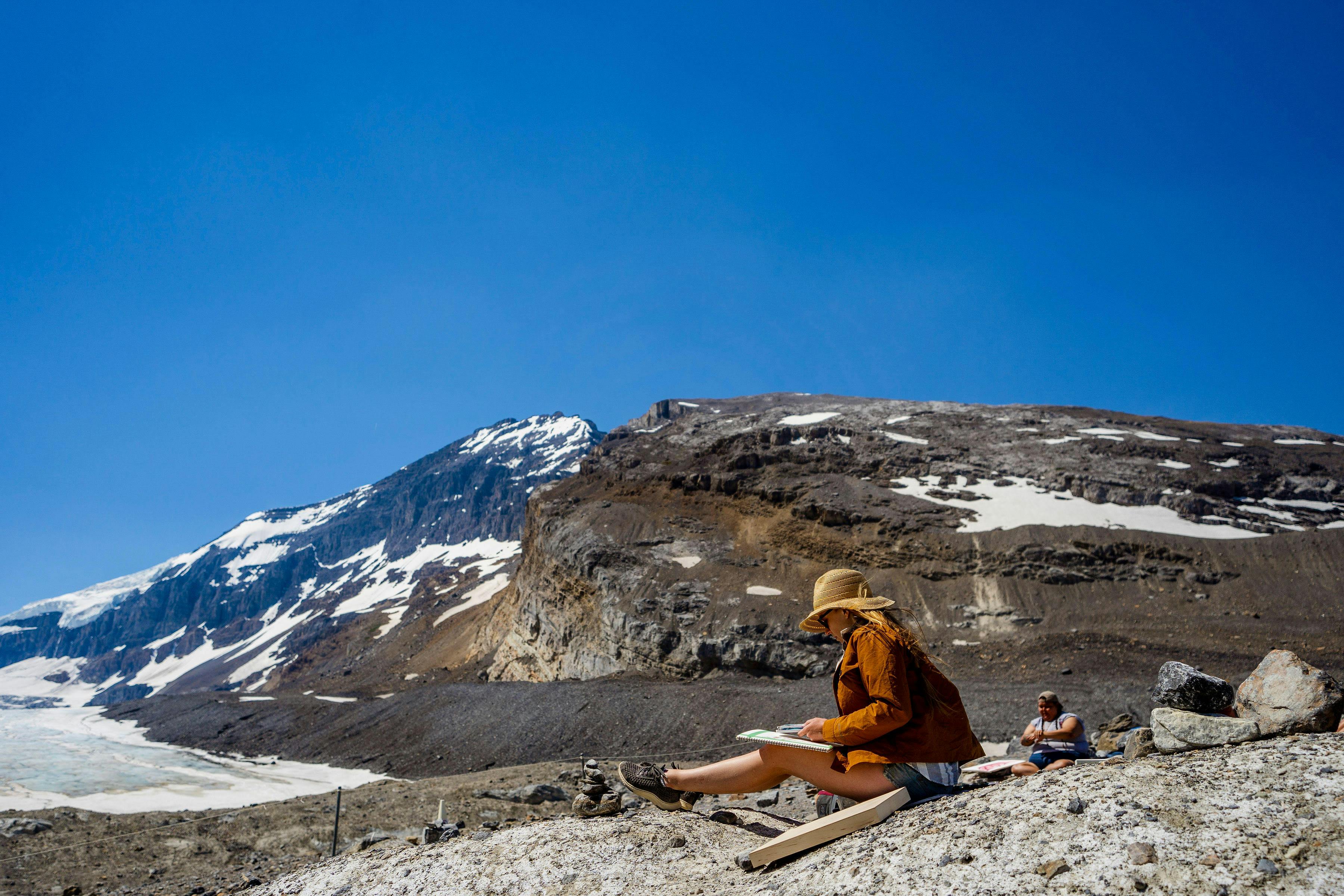
The Rockies Repeat collective is working to understand Whyte’s legacy, and to perhaps provide a course correction of sorts. This group of six artists (working with a creative team who produce the projects) have been trekking into the mountains to revisit the sites of Whyte’s artwork. While there they’ve been making new pieces in their own styles, and in this way they document the changes that are present in the land. One of the cornerstones of the project is to represent changes to glaciers, which are projected to disappear from the Rockies within the next hundred years. Climate change has led to loss of the glaciers, this has had a cascading impact on the other aspects of the ecosystem, and the artwork the collective members make demonstrates stark differences.
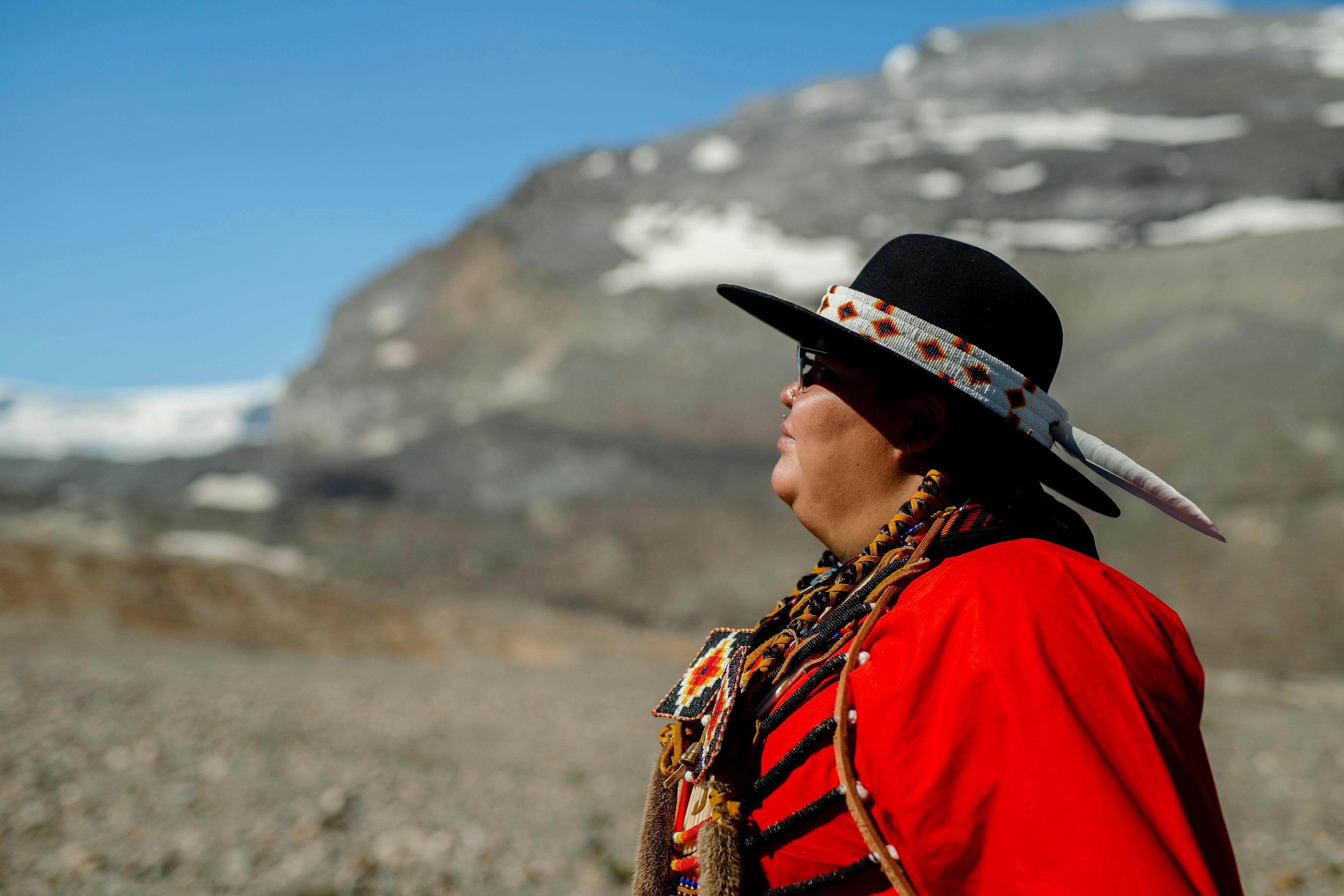
Yet, another change is equally present in the contemporary works; Caroline Hedin, the project founder and director of a film that documents the collective’s work was intentional about including Indigenous voices. On the treks, Indigenous knowledge keeper artists are joined by a scientist, the production team, as well as settler artists, who each bring their own expertise which they share, teaching others in the process. Sikapinakii, one of three artists who identify as Indigenous in the collective feels that this is one element that could lead to real change; “it’s different, and I really like it.” Sikapinakii (who identifies using they/them pronouns) felt that the non-Indigenous participants brought a genuine humility and desire for knowledge, traits that Sikapinakii also exhibits in conversation as well as through their work.
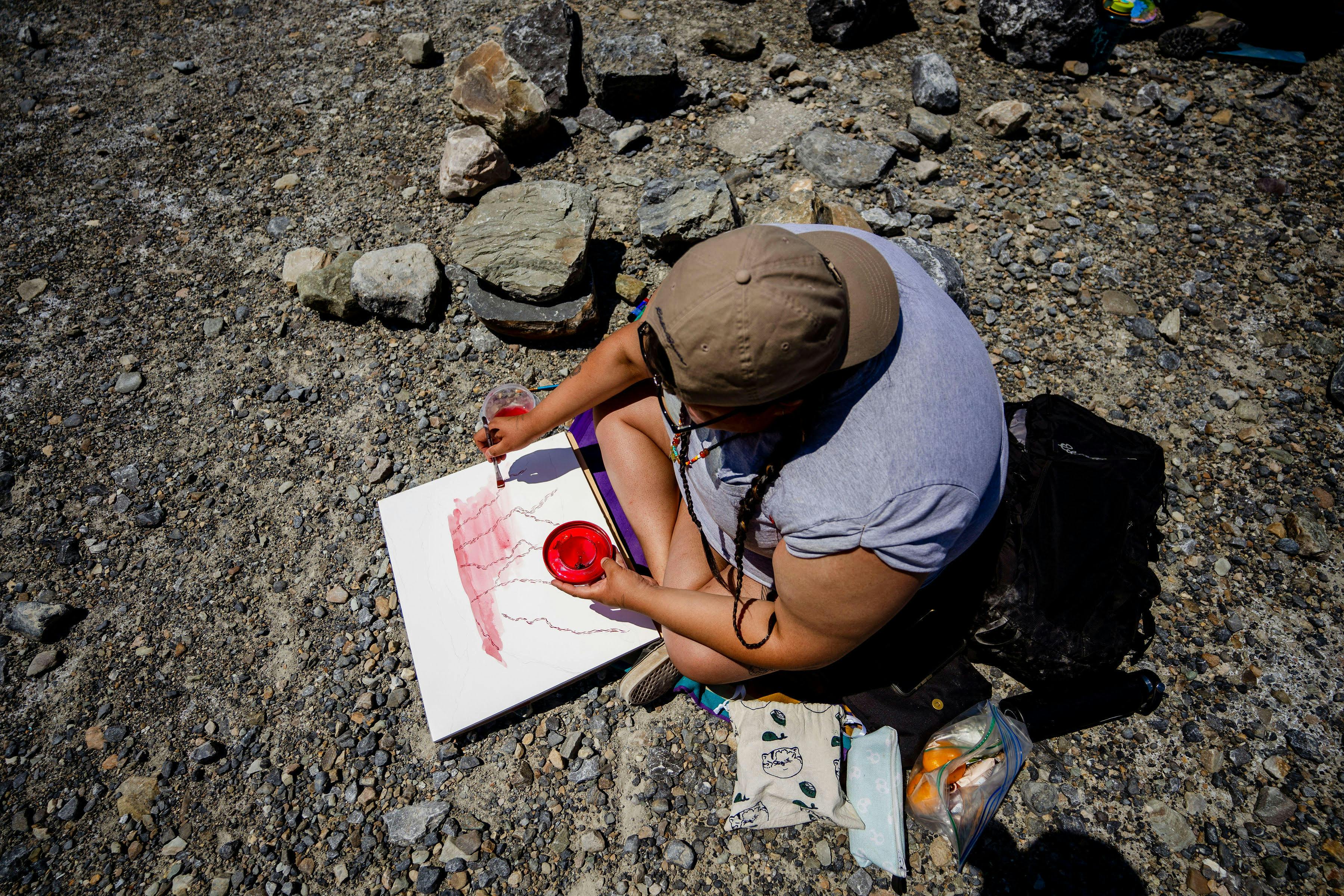
Sikapinakii didn’t consider themselves a painter, but knew when they heard about the project bringing together artists with a passion for the environment and mountain lands, that they knew they wanted to join. The process of using a medium that wasn’t typically their first choice was a welcome challenge, and Sikapinakii developed a newfound love of painting that they plan to use in an upcoming Arts Commons exhibition.
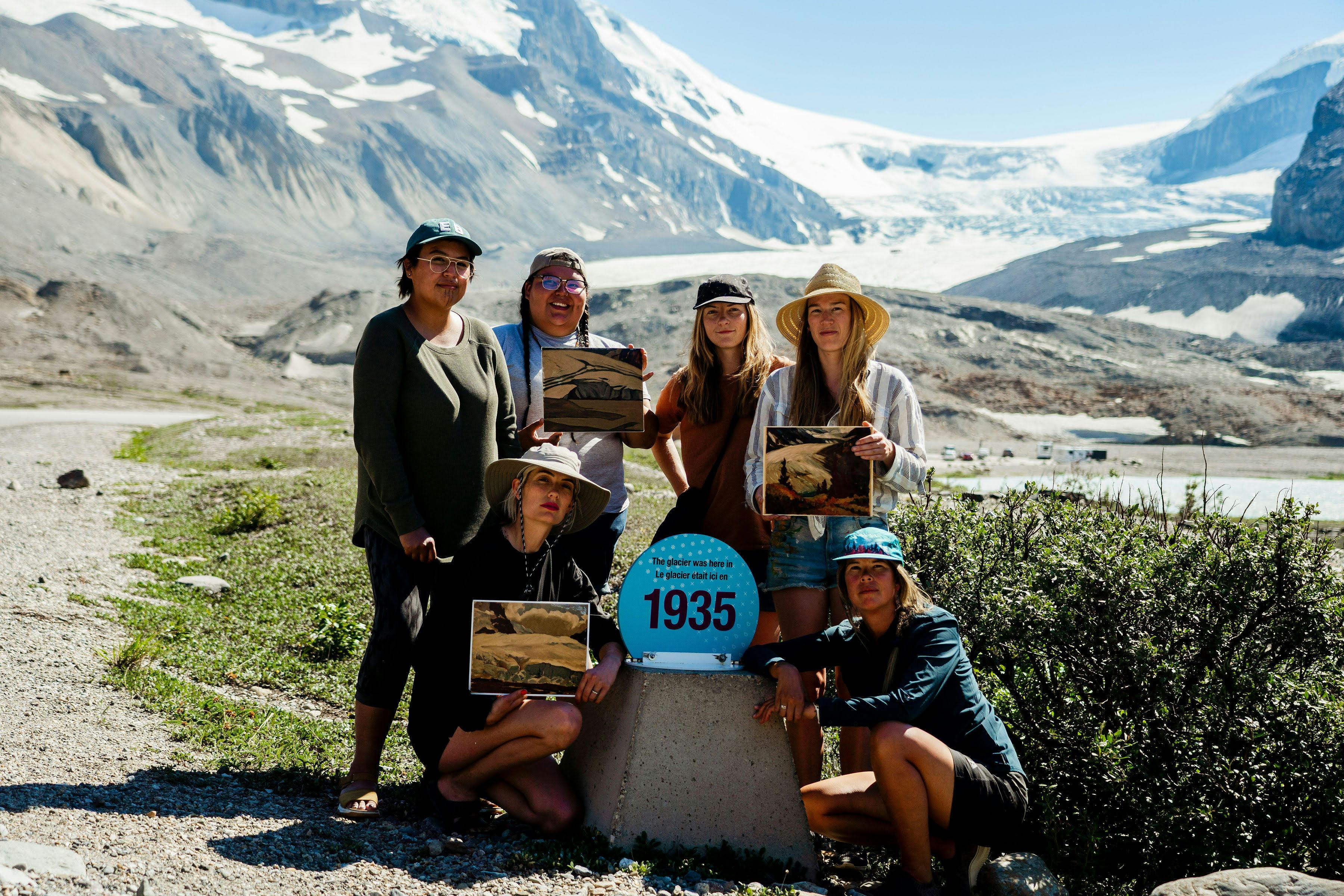
Sikapinakii and the other artists hope that by creating new stories, through the process of their collective work as much as through their finished pieces, they will address climate change through culture and art. The intersectional nature of their process, engaging different art forms, history, and diverse peoples, meets the intersectional nature of the climate change crisis through creative and thoughtful responses. Sikapinakii recognizes that this is a new approach bound in mutual respect, which is an important point of departure from historic relationships “they really romanticized Indigenous people in the past.” Settler attitudes about Indigenous people and the natural environment have brought us to this point in history; with the glaciers nearing the point of no return, the need to find new ways of knowing and doing together has never been more urgent.